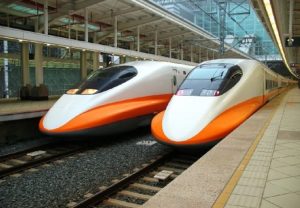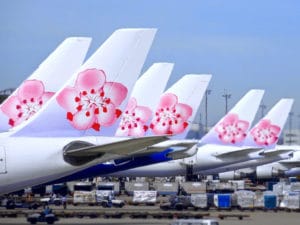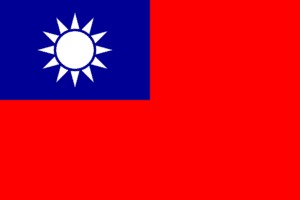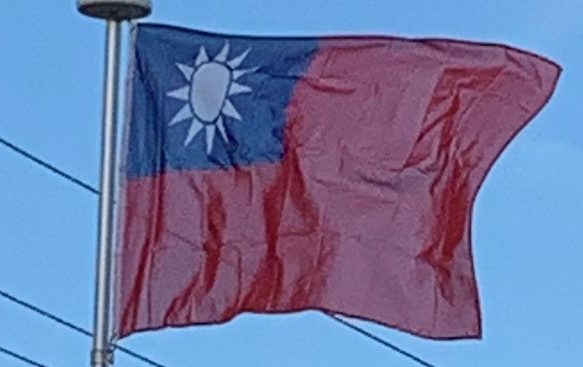Both highways and railways are concentrated near the coasts where the majority of the population resides, with 1,619 km (1,006 mi) of motorway.

Railways in Taiwan are primarily used for passenger services, with Taiwan Railway Administration (TRA) operating a circular route and Taiwan High Speed Rail (THSR) running high speed services on the west coast. Urban transit systems include Taipei Metro, Kaohsiung Rapid Transit Taoyuan Metro and New Taipei Metro.
Major airports include Taiwan Taoyuan, Kaohsiung, Taipei Songshan and Taichung. There are currently seven airlines in Taiwan, the largest ones being China Airlines and EVA Air.

There are four international seaports: Keelung, Kaohsiung, Taichung, and Hualien.
Flag of the Republic of China:
The flag of the Republic of China (commonly known as the Blue Sky, White Sun, and a Wholly Red Earth) consists of a red field with a blue canton bearing a white disc with twelve triangles surrounding it. The disc and triangles symbolize the sun and rays of light emanating from it respectively.
The flag was originally designed by the anti-Qing group, Revive China Society in 1894 with the addition of the red field component in 1906 by Dr. Sun Yat-sen in speech.

It was first used in mainland China as the Navy flag in 1912, and was made the official national flag of the Republic of China (ROC) in 1928 by the Kuomintang (KMT). It was enshrined in the sixth article of the Constitution of the Republic of China when it was promulgated in 1947. The flag is no longer officially used in mainland China, as the People’s Republic of China was founded in 1949.
As the islands of Taiwan and Penghu were under Japanese rule until 1945, the flag was not in use in two territories, until ROC took control in 1945. The flag is now mostly used within Taiwan, Penghu, Kinmen, Matsu and other outlying islands, where the ROC relocated to in 1949 after its defeat in the Chinese Civil War.
The twelve rays of the white Sun symbolize the twelve months and the twelve traditional shichen (時辰; shíchén), a traditional unit of time which corresponds to two modern hours. Sun Yat-sen added the “Red Earth” to the flag to signify the blood of the revolutionaries who sacrificed themselves in order to overthrow the Qing Dynasty and create the ROC. Together, the three colors of the flag correspond to the Three Principles of the People: Blue represents nationalism and liberty; White represents democracy and equality; and Red represents the people’s livelihood and fraternity. President Chiang Kai-shek proclaimed on the National Day in 1929, “As long as a national flag with Blue Sky, White Sun, and a Wholly Red Earth flies on the land of China, it symbolizes the independence and liberty of the descendants of the Huang Emperor”.
